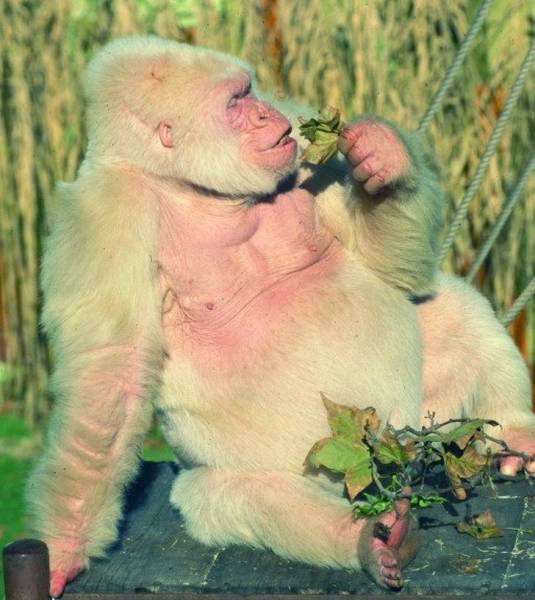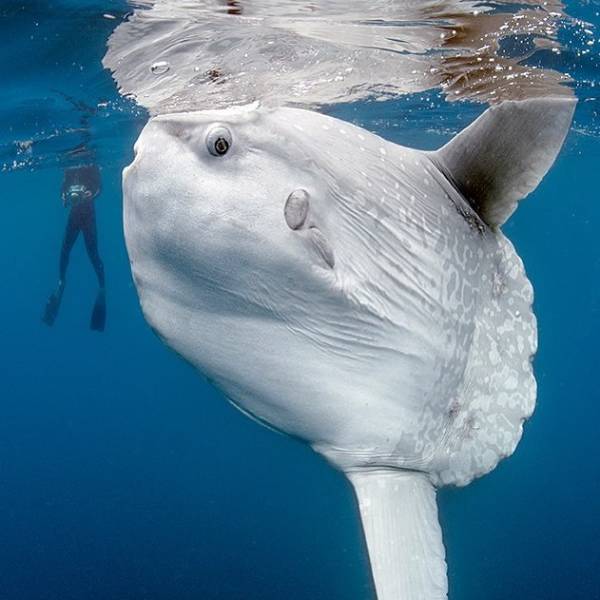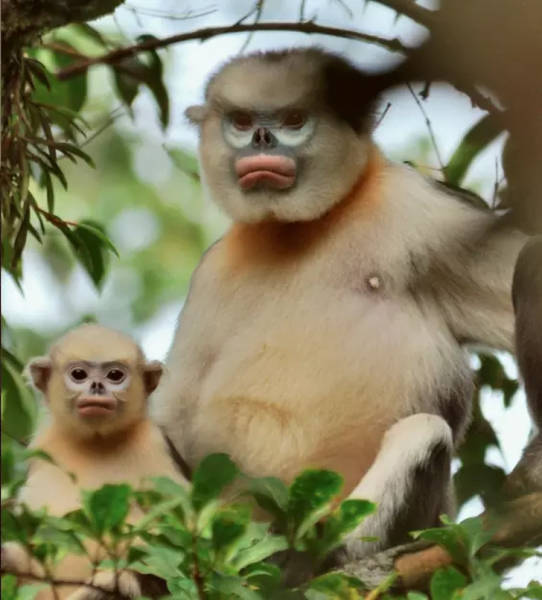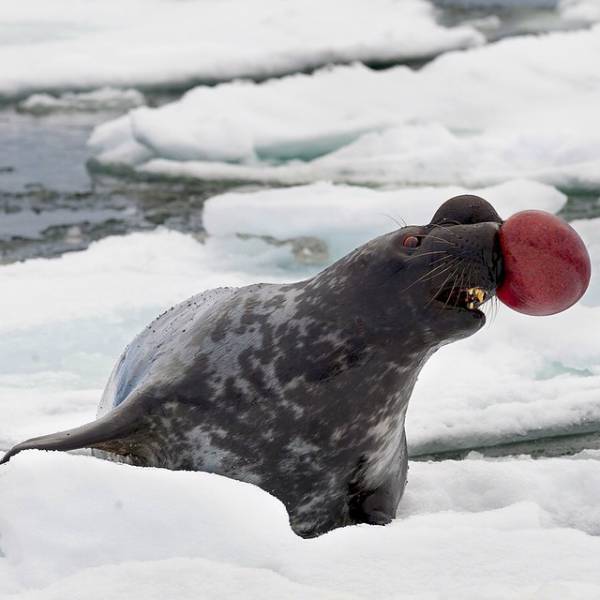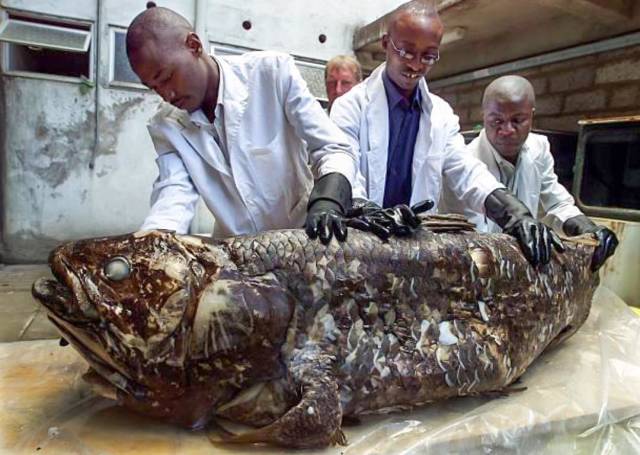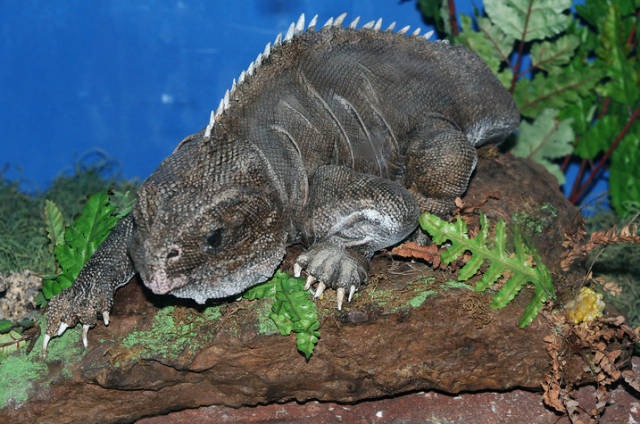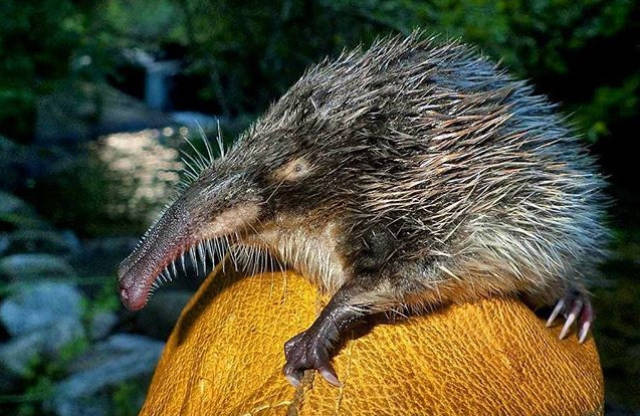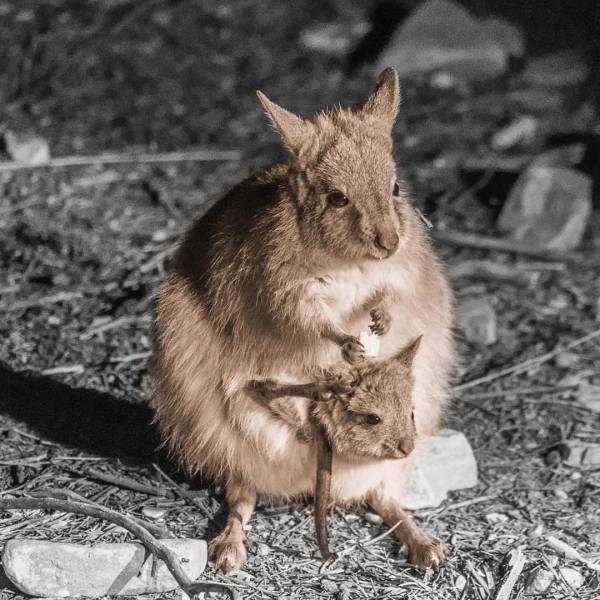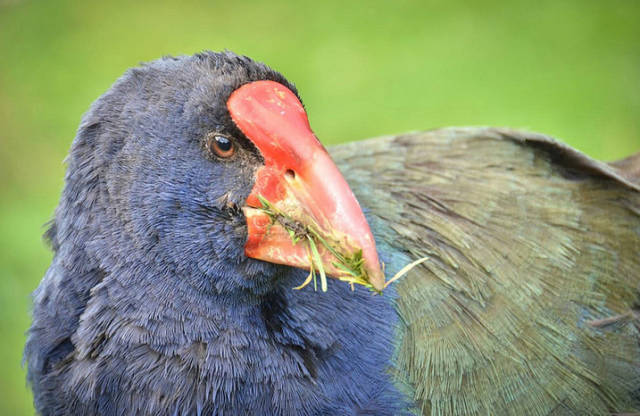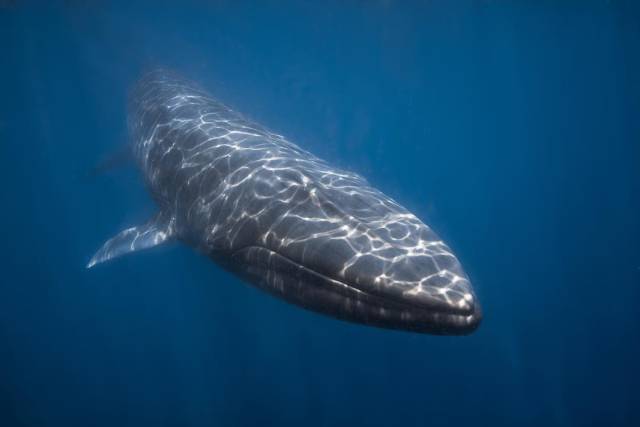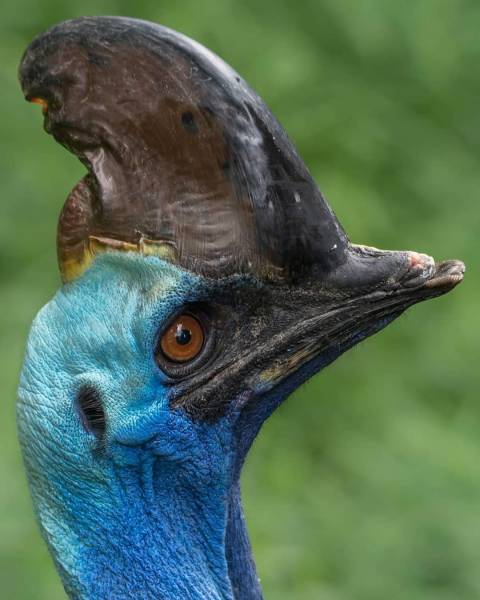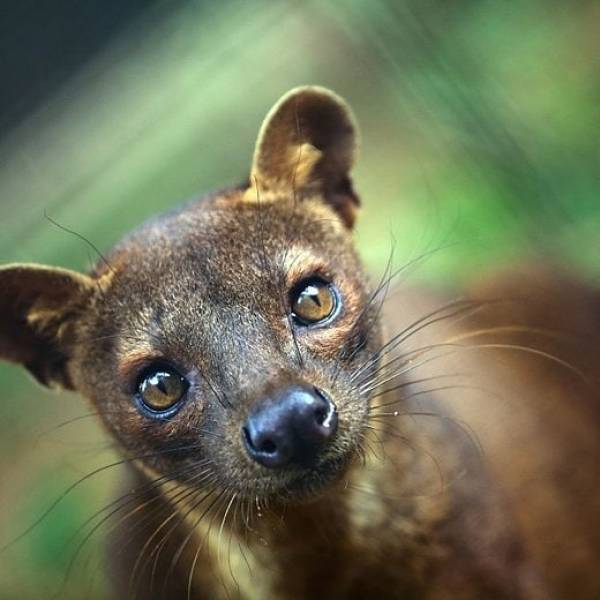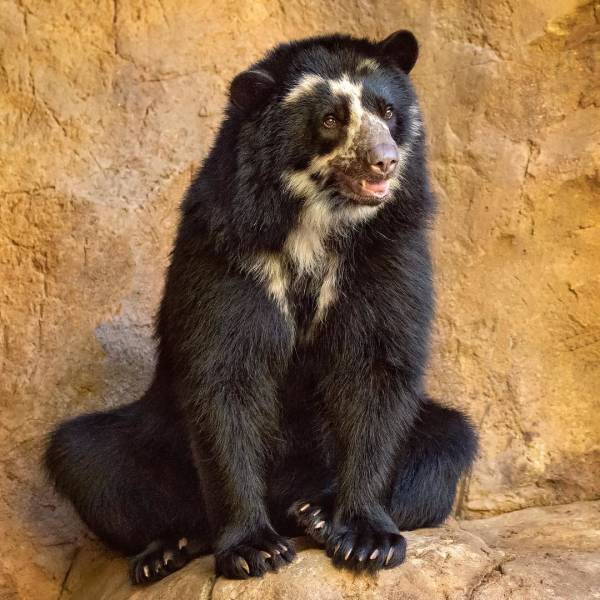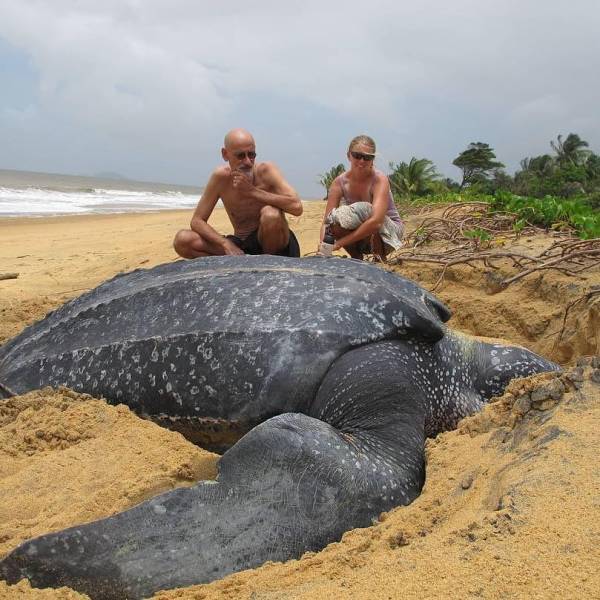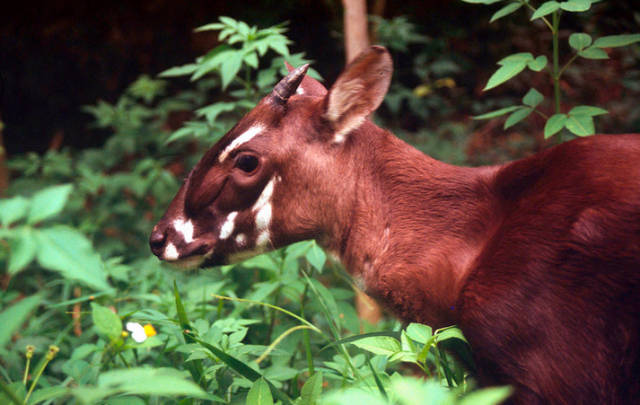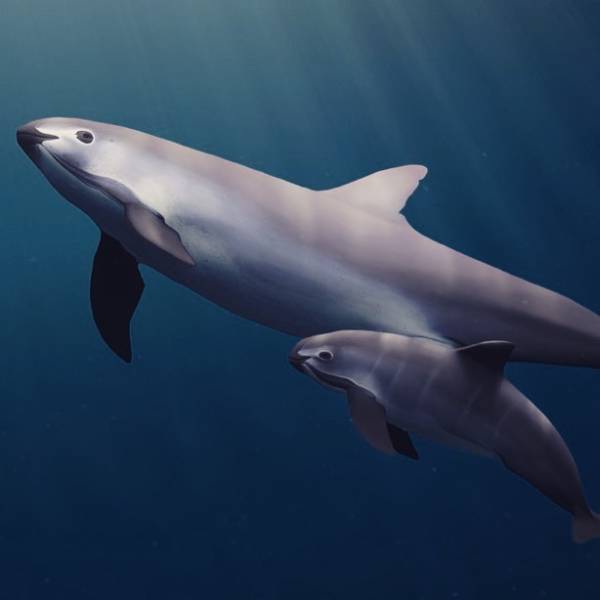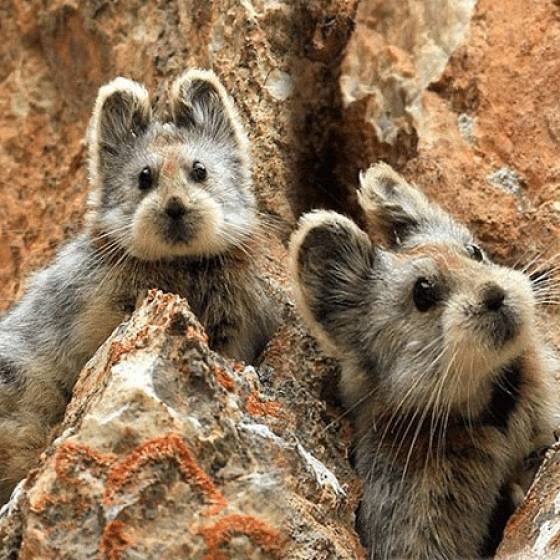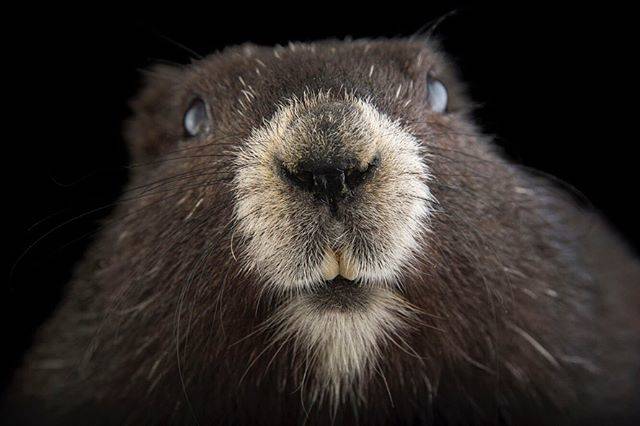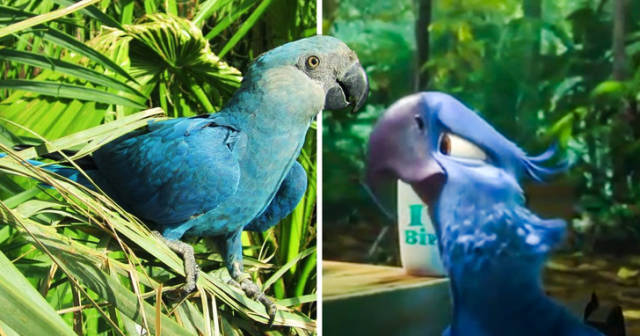Western lowland gorilla
done byMeet Snowflake — a famous albino gorilla who knew a thing or 2 about love! He had offspring with 3 different females during his 36 years of life at the Barcelona Zoo. And it’s really cool of him, because the habitats of his species are suffering from deforestation, farming, and the over-grazing of other animals.
Sunfish
Ocean sunfish, or mola, look like huge blobs and are the world’s largest fish with bones. Imagine eating one — what a mess! These fish are born with a back fin but it never fully develops and grows.
Tonkin snub-nosed monkey
Pay attention — these monkeys are snub-nosed, not snob-nosed, though they do look a bit like snobs! Maybe that’s because they’re among the most endangered primates in the world.
Hooded (bladdernosed) seal
Hooded seals have an elastic nasal membrane — or hood — on their heads and can inflate them by sending blood to the area (ouch). This often happens when another male approaches the seal’s female partner. The sight of this would scare even the bravest among us. Who knew they were such protective creatures?
Coelacanth
Scientists thought that coelacanth, a deepwater fish, became extinct about 70 million years ago. In 2001, a specimen weighing 170 pounds was found. This fish has changed very little over dozens of millions of years, which is truly amazing.
Sumatran rhino
This kind of rhino is the smallest and hairiest of all their species, reaching a height of 100-150 cm. They love taking mud baths and spend around 300 minutes per day in there! There are less than 100 representatives of this species left out in the wild. Due to extensive poaching, their numbers decreased by almost 70% in the past 20 years.
Tuatara (sphenodon)
It’s not a lizard and it’s not a dinosaur — but a combo of both! Tuatara is the one and only (lucky) descendant of the first dinosaur lineage. It has a light-sensitive organ on the top of its head which is often referred to as its third eye and it looks exactly the same as it did 200 million years ago.
Desman (muskrat)
Part rat, part mole, part elephant, and part platypus — it’s a peculiar animal indeed! Tiny eyes the size of a pin are compensated by a profound nose that looks like a trunk. Desman also has 44 teeth, and its fur has a different structure than the fur of other animals: its hairs are thinner at the roots and thicker at the ends.
Mala (Rufous hare wallaby)
Mala, small nocturnal animals from Australia, will only breed if there has been enough rainfall. Now that’s a reason to say “no” to your loved one! In fact, no rain means no grass for them, and youngsters may not survive when born.
Takahe bird
Despite being a bird, New Zealand Takahe cannot fly since their breast muscles aren’t developed enough. Their population was once enormous, but their beautiful feathers were so attractive that people killed them into endangerment to use them as accessories.
Numbat
Numbats are close relatives of anteaters and feed on termites. They eat about 20,000 termites a day! Numbat babies clamp to a teat at their mom’s belly and stay there for 5 long months. The poor moms though...
Omura’s whale
Found near the coast of Madagascar in 2013, this small whale is an enigma in itself. It’s pale on the one side and dark on the other and prefers to stay in tropical waters which is unusual for whale species. These waters don’t provide much food, so how Omura’s whales feed is quite a mystery.
Cassowary
It is the third-tallest and second-heaviest bird in the world after the ostrich and emu. The southern cassowary is also one of the most dangerous birds, as its fierce kick can be fatal for a human or other smaller creature.
Fossa
The scientific name Fossa means “hidden anus” (believe it or not!) Their butt is kind of concealed by an anal pouch. Fossas live on the island of Madagascar and are the biggest carnivorous mammals there, feeding mostly on lemurs.
Spectacled bear
Shy, peaceful, and solitary animals — these bears have a perfect personality and a peculiar look due to light patches of fur around their eyes. And believe it or not — they are great tree climbers, as their favorite (and almost only) source of food — the bromelia plant — grows high on trees!
Leatherback sea turtle
It’s the biggest of 5 sea turtles that exist in the world and can reach up to 1,300 pounds. One individual turtle was recorded at 2,000 pounds and appeared in the Guinness Book of World Records. We’d sure love to touch them — they have a leathery shell which is much softer than the stone-like shell of other turtles.
Saola
Found only in Vietnam and Laos, this Asian unicorn is one of the rarest mammals on the planet. Its name is translated as “spinning-wheel post horn.”
Vaquita
The Vaquita, or Gulf of California harbor porpoise, is so cute it hurts! Yet only 12 individuals of this species remain in the world today, which makes them the most endangered of 129 marine mammal species. They usually get trapped in illegal nets purposed for fish and can’t get out. Go, vaquita, go!
Ili pika
This “magic bunny” lives in China and is extremely rare to come across. Maybe taking pictures of them brings good luck? They prefer living at high elevations, from 2,800 to 4,100 meters, so you’d better start your climbing training sessions now!
Vancouver Island marmot
Once considered one of the most endangered animals in the world, this cute species managed to build back from just 30 females left alive! They are a vivid example of how zoos do a great job of actually saving lots and lots of species from extinction and preserving biodiversity for all of us.
Spix Blue Macaw
The broad public learned about these wonderful blue birds when the cartoon movie Rio first hit theaters in 2011. The movie raised the subject of the Macaw’s extinction on a large scale. In 1819 German naturalist Johann Baptist von Spix collected a specimen in Brazil and the bird was named after him. They were already rare by the time of this discovery. In June 2018 about 158 individuals remained, and the project to aid in their reproduction in the wild is working hard to improve the situation.

